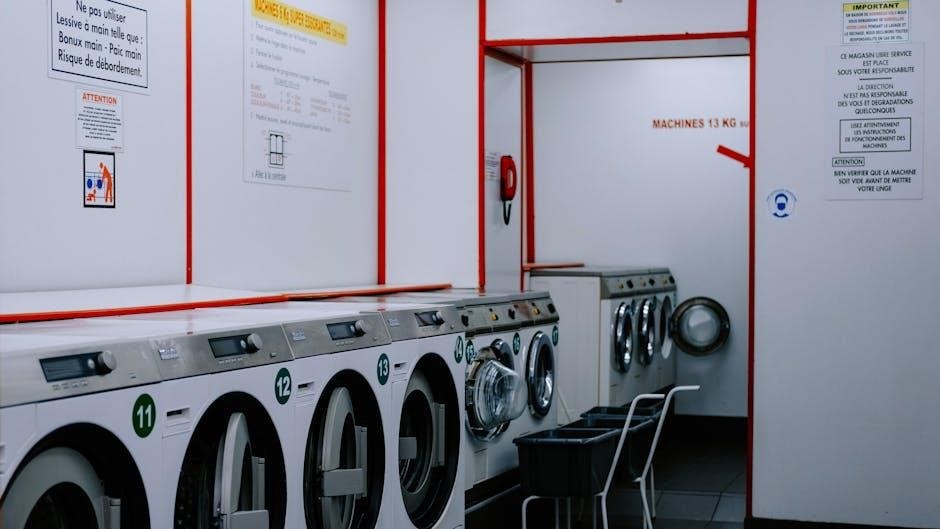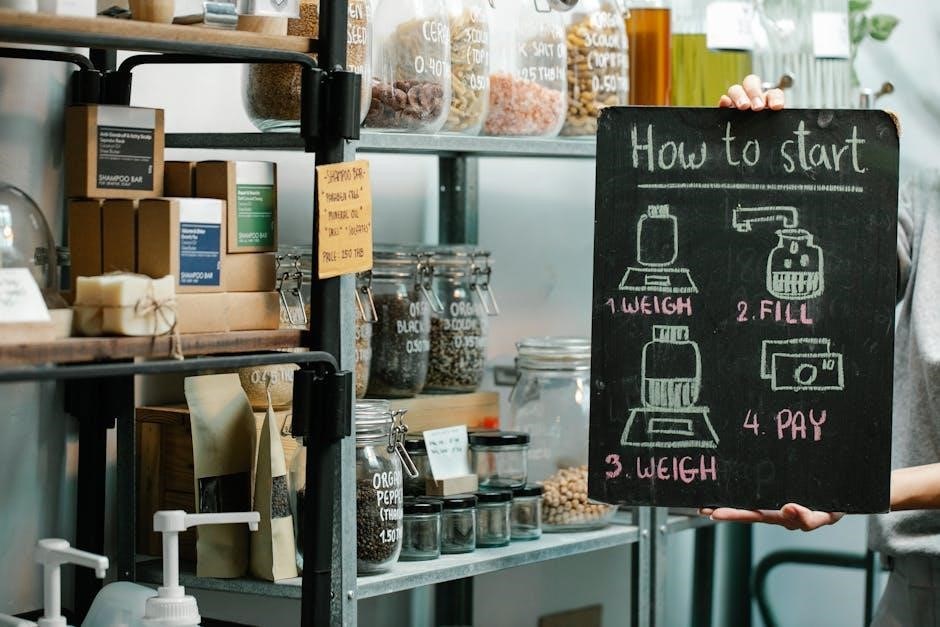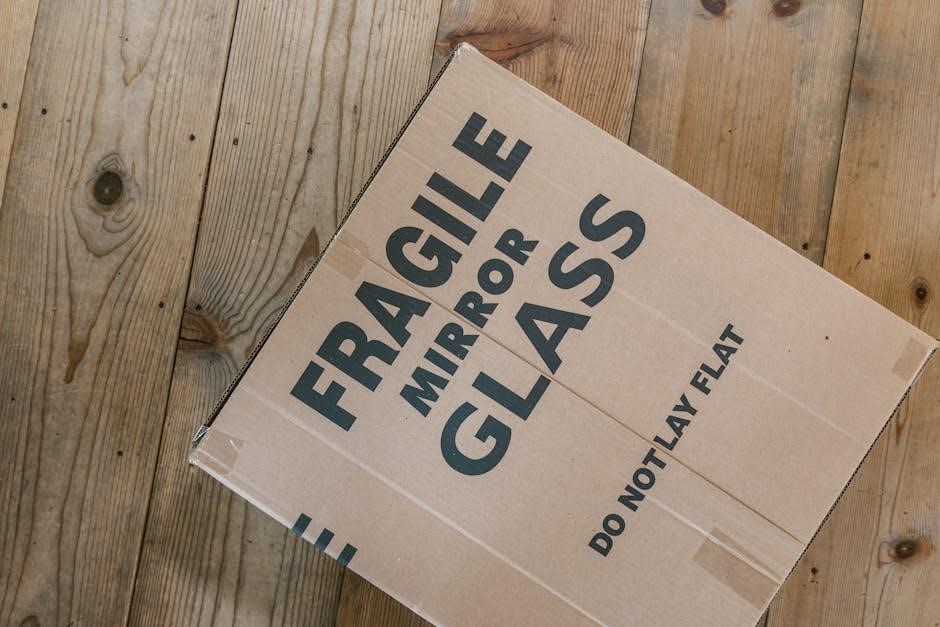Immediate Post-Treatment Care
After Botox injections, remain upright for 4 hours to prevent spreading the toxin. Avoid touching or massaging the treated area for 3 hours. Stay hydrated to aid recovery and minimize swelling. Refrain from strenuous activities, makeup, and bending for 24 hours. Keep the area clean to reduce infection risks.
- Avoid lying down or bending for 4 hours post-treatment.
- Do not rub or massage the injected area for 3 hours.
- Stay hydrated to support the healing process.
- Keep the treated area clean to prevent infection.

This ensures optimal results and minimizes side effects.
1.1 Avoiding Lying Down
Avoid lying down or bending for at least 4 hours after Botox injections. This prevents the toxin from spreading to unintended areas, which could cause uneven results or bruising. Keep your head elevated to reduce swelling and ensure the product settles correctly. Refrain from activities that involve bending or leaning forward during this period. If you must lie down, do so gently and avoid pressing on the treated areas. This precaution helps maintain the effectiveness of the treatment and minimizes potential side effects. Adhering to this guideline is crucial for achieving the desired aesthetic or therapeutic outcomes. Always consult your provider for personalized advice.
1.2 Staying Upright
Staying upright for 4 hours after Botox injections is essential to prevent the toxin from spreading to unintended areas. This helps ensure the product remains localized and effective. Avoid bending, leaning forward, or engaging in activities that require straining. Keeping your head elevated reduces swelling and promotes proper settling of the toxin. By staying upright, you minimize the risk of uneven results or complications. This simple precaution supports optimal outcomes and maintains the effectiveness of the treatment. Adhering to this guideline is a key part of post-treatment care and helps achieve the desired aesthetic or therapeutic benefits.
1.3 Keeping the Treated Area Clean
Keeping the treated area clean after Botox injections is crucial to prevent infection and promote healing. Gently wash the area with mild soap and water; avoid harsh cleansers or exfoliants. Do not use abrasive products, as they can irritate the skin. Avoid touching the treated area excessively, as this can introduce bacteria. Pat the area dry instead of rubbing. Maintain good hygiene practices to minimize the risk of complications. Cleanliness ensures the best environment for the toxin to work effectively and helps achieve the desired results without side effects. Proper care supports a smooth recovery and optimal outcomes.

Lifestyle Adjustments
Avoid alcohol for 24 hours post-treatment to minimize bruising and swelling. Stay hydrated to flush out toxins and support recovery. Maintain a balanced diet rich in nutrients to aid healing and overall well-being. Avoid blood-thinning medications if advised by your doctor. Limit sun exposure and avoid strenuous activities for 24 hours. These adjustments ensure your body heals effectively and maximizes the treatment’s success.
2.1 Avoiding Alcohol
Avoiding alcohol for at least 24 hours after Botox treatment is crucial to minimize bruising and swelling. Alcohol thins the blood, which can increase the risk of bleeding at injection sites. This precaution helps prevent complications and ensures the toxin distributes evenly. Staying hydrated with water is recommended instead, as it supports the healing process and maintains skin health. Limiting alcohol intake also reduces the likelihood of adverse reactions, promoting smoother recovery and better outcomes. By avoiding alcohol, you can help your body heal effectively and achieve the desired results from your Botox treatment.
- Avoid alcohol for 24 hours post-treatment.
- Alcohol thins blood, increasing bruising risks.
- Stay hydrated with water instead.
This supports recovery and optimal results.
2.2 Staying Hydrated
Staying hydrated is essential after Botox injections to flush out toxins and support healing. Drinking plenty of water helps maintain skin elasticity and ensures the toxin spreads evenly for optimal results. Proper hydration can reduce swelling and bruising, enhancing recovery. Avoid caffeinated beverages that dehydrate, and opt for water or herbal teas instead. Hydration also maintains blood flow, which is vital for the toxin to take effect smoothly. By prioritizing water intake, you contribute to a faster and more comfortable recovery, ensuring the best possible outcomes from your Botox treatment.
- Drink plenty of water post-treatment.
- Hydration aids toxin distribution and healing.
- Minimize caffeine and sugary drinks.
Water supports skin health and recovery.
2.3 Dietary Advice
A balanced diet supports recovery after Botox. Avoid alcohol and blood-thinning foods like garlic, ginger, and turmeric for 24 hours, as they may increase bruising. Opt for nutrient-rich foods like berries, leafy greens, and omega-3 sources to enhance skin health. Avoid processed foods and sugars that can cause inflammation. Stay hydrated with water and consider herbal teas. A healthy diet promotes even toxin distribution and minimizes side effects, ensuring the best results from your treatment.
- Avoid alcohol and blood-thinning foods for 24 hours.
- Incorporate antioxidants and omega-3s for skin health.
- Limit processed foods and sugary snacks.
Nutrition plays a key role in recovery and outcomes.

Activities to Avoid
After Botox, avoid strenuous exercise, facial treatments, and rubbing the treated area for 24 hours. Refrain from lying down or bending for 4 hours post-treatment.
- Avoid strenuous exercise for 24 hours.
- Do not rub or massage the treated area.
- Stay upright for 4 hours post-injection.
These precautions minimize side effects and ensure optimal results.
3.1 Avoiding Strenuous Exercise
Strenuous exercise should be avoided for at least 24 hours after Botox injections. This prevents the toxin from spreading to unintended areas, which could reduce effectiveness or cause complications. Activities like heavy lifting, running, or intense workouts can increase blood flow and pressure, potentially affecting treatment outcomes. Gentle movements are acceptable, but avoid anything that raises your heart rate significantly. Adhering to this guideline helps ensure the Botox settles correctly and delivers the desired results. Waiting 24 hours allows the toxin to take effect in the targeted muscles without disruption.
- Avoid intense workouts for 24 hours post-treatment.
- Refrain from heavy lifting or bending.
- Gentle movements are permissible.
This precaution supports optimal results and minimizes risks.
3.2 Avoiding Facial Treatments
Facial treatments such as facials, laser sessions, or microdermabrasion should be avoided for at least 7 days after Botox injections. These treatments can irritate the skin and cause the toxin to spread, reducing its effectiveness or leading to unwanted side effects. Massages, exfoliating treatments, and other beauty procedures should also be postponed during this period. Allowing the skin to heal and the Botox to settle ensures better results and minimizes complications. Always consult your provider before resuming any facial treatments to confirm it’s safe and won’t interfere with your treatment.
- Postpone facials and laser treatments for 7 days.
- Avoid microdermabrasion and exfoliating treatments;
- Massages should be deferred during this period.
Patience ensures the best outcome and reduces risks.
3.3 Avoiding Massaging the Area
Avoid massaging or rubbing the treated area for at least 3-4 hours after Botox injections. Massaging can cause the toxin to spread to unintended areas, reducing its effectiveness or leading to asymmetrical results. Gently pat the skin if necessary, but avoid vigorous movements. This precaution ensures the Botox remains localized and works as intended. Massaging too soon can also increase the risk of bruising or swelling. Keeping the area undisturbed allows the toxin to settle properly, promoting optimal outcomes.
- Refrain from massaging for 3-4 hours post-treatment.
- Avoid vigorous movements near the injected site.
- Gentle patting is acceptable if needed.
This helps maintain the treatment’s effectiveness and minimizes risks.

Facial Exercises
Gentle facial exercises, like frowning or squinting, can help distribute Botox evenly, but avoid over-exertion to prevent spreading the toxin.
4.1 Muscle Exercises Post-Treatment
Mild facial exercises, such as frowning, raising eyebrows, or squinting, are recommended within the first hour after Botox injections. These movements help the toxin spread evenly into the targeted muscles, enhancing effectiveness. However, avoid vigorous or excessive exercises that might disrupt the treatment area. Gentle movements promote better absorption without risking toxin migration. Patients should practice these exercises as directed by their provider to ensure optimal results and minimize potential side effects. Proper technique is key to achieving the desired aesthetic outcome while maintaining safety.
4.2 Avoiding Over-Exertion
Avoiding over-exertion post-Botox is crucial to prevent toxin migration and optimize results. Strenuous activities, like heavy lifting or intense workouts, should be avoided for 24 hours. Gentle movements are permissible, but excessive strain can disrupt the treatment area. Over-exertion may lead to bruising or uneven distribution of the toxin, reducing effectiveness. Patients should refrain from activities that cause excessive sweating or facial strain. Moderation is key during the initial recovery period. By avoiding over-exertion, individuals can ensure the Botox works effectively and safely, achieving the desired aesthetic outcomes without complications.

Makeup and Skincare
Resume makeup and skincare 24 hours post-treatment. Use gentle, non-irritating products to avoid skin reactions. Avoid harsh exfoliants or astringents near treated areas. Sun protection is essential to maintain results and prevent skin damage.
- Wait 24 hours before resuming makeup and skincare.
- Choose gentle, fragrance-free products.
- Avoid exfoliants or astringents near injection sites.
- Use sunscreen to protect treated skin.
Proper skincare supports healing and preserves treatment efficacy.
5.1 Resuming Makeup Use
It is generally safe to resume makeup use 24 hours after Botox injections. Use clean makeup tools and gentle, non-irritating products to minimize the risk of irritation or infection. Avoid sharing makeup or using expired products, as this can introduce bacteria to the treated area. Opt for lightweight, oil-free formulations that won’t clog pores or cause inflammation. If you experience redness or sensitivity, consider patch-testing products before full application. Avoid heavy or harsh makeup for the first week to allow the skin to heal properly. Always remove makeup gently at the end of the day to maintain skin health and prevent complications.
- Wait 24 hours before applying makeup.
- Use clean, gentle, and non-comedogenic products.
- Avoid sharing makeup or using expired items.
- Choose lightweight, oil-free formulations.
- Remove makeup gently to prevent irritation.
Proper makeup hygiene supports healing and minimizes risks.
5.2 Skincare Routine Adjustments
After Botox, adjust your skincare routine to avoid irritating the treated area. Use gentle, non-exfoliating cleansers and avoid products containing retinol, vitamin C, or alpha-hydroxy acids for 24-48 hours. Refrain from using harsh toners or astringents that could cause dryness or irritation. Moisturize lightly to maintain skin balance without clogging pores. Avoid excessive rubbing or scrubbing, as this can dislodge the toxin. Sunscreen is essential; opt for a broad-spectrum, non-greasy formula to protect your skin. Avoid facial treatments like microdermabrasion or chemical peels for at least one week. Stick to a consistent routine to support skin health and ensure optimal Botox results.
- Use gentle, non-exfoliating products for 48 hours.
- Avoid retinol, vitamin C, and alpha-hydroxy acids.
- Moisturize lightly to maintain skin balance.
- Apply broad-spectrum sunscreen daily.
- Delay facial treatments for one week.
These adjustments promote healing and maintain results.
5.3 Sun Exposure Precautions
After Botox, protect your skin from sun exposure to prevent complications. Avoid direct sunlight for 24 hours post-treatment, as UV rays can cause swelling and bruising. When going outside, wear a broad-spectrum sunscreen with at least SPF 30 and reapply every two hours. Use protective gear like wide-brimmed hats and sunglasses to shield your face; Avoid tanning beds and prolonged sun exposure for one week. Sun damage can also worsen skin texture and reduce the effectiveness of Botox. Be mindful of photosensitivity and take precautions to maintain your skin’s health and the longevity of your treatment results.
- Avoid direct sunlight for 24 hours post-treatment.
- Use SPF 30 or higher sunscreen and reapply regularly.
- Wear protective hats and sunglasses outdoors.
- Steer clear of tanning beds for one week.
Proper sun care ensures optimal outcomes and skin protection.

Managing Side Effects
Monitor for bruising, swelling, or droopy eyelids post-treatment. Apply ice to reduce swelling and bruising. Contact your provider if side effects persist or worsen over time.
- Monitor for common side effects like bruising or swelling.
- Apply ice to affected areas to reduce discomfort.
- Seek medical advice if side effects persist.
Early intervention helps manage complications effectively.
6.1 Monitoring for Side Effects
After Botox injections, monitor the treated area for bruising, swelling, or droopy eyelids. Mild side effects typically resolve within a few days. Apply ice to reduce swelling and bruising.
- Monitor for signs of bruising or swelling at the injection site.
- Apply ice packs to reduce discomfort and inflammation.
- Watch for rare but serious side effects like droopy eyelids or difficulty swallowing.
- Contact your provider if symptoms persist or worsen over time.
Early detection and management of side effects ensure a smooth recovery and optimal results.
6.2 Managing Bruising and Swelling
Bruising and swelling are common after Botox injections. Apply ice packs to the treated area to reduce inflammation. Avoid alcohol for 24 hours to minimize bruising risks. Gently apply arnica gel to aid healing. Elevate your head while sleeping to reduce swelling. Avoid strenuous activities for 24 hours post-treatment.
- Apply ice packs to the affected area to reduce swelling.
- Avoid alcohol for 24 hours to prevent prolonged bruising.
- Use arnica gel to help reduce bruising and inflammation.
- Elevate your head while sleeping to minimize swelling.
These steps can help reduce bruising and swelling, ensuring a faster recovery and better results.
6.3 Addressing Complications
If complications arise, seek medical attention immediately. Common issues include droopy eyelids, uneven results, or eye dryness. Contact your provider if bruising persists or worsening symptoms occur. In rare cases, complications like facial asymmetry may require additional treatments. Use artificial tears for dry eyes and avoid rubbing the area. Follow-up appointments are crucial to address any concerns. Monitor for unusual symptoms and report them promptly to your provider for timely intervention.
- Seek immediate medical advice for severe complications.
- Contact your provider for persistent or worsening symptoms.
- Use artificial tears for eye dryness if recommended.
Addressing complications early ensures better outcomes and minimizes risks.

Best Practices for Optimal Results
Adhere to post-treatment guidelines, attend follow-ups, and maintain realistic expectations. Stay hydrated, avoid strenuous activities, and keep the area clean. Consistency ensures lasting results.
- Follow all instructions provided by your practitioner.
- Attend scheduled follow-up appointments for evaluations.
- Stay hydrated to support toxin distribution.
7.1 Following Post-Treatment Instructions
Adhering to your practitioner’s guidelines is crucial for optimal results. Avoid bending, lying down, or strenuous activities for 4-24 hours post-treatment. Refrain from touching or massaging the treated area to prevent toxin spread. Keep the area clean and avoid makeup for 24 hours. Staying upright for the first 4 hours helps contain the toxin. Hydration aids in toxin distribution and minimizes side effects. Follow all specific advice given by your provider to ensure safety and effectiveness. Proper compliance enhances outcomes and reduces risks of complications. Consistency in aftercare leads to better, longer-lasting results.
7.2 Attending Follow-Up Appointments
Follow-up appointments are essential to monitor treatment effectiveness and address concerns; Schedule your follow-up 2 weeks post-treatment to assess results. Your practitioner may adjust doses or technique based on outcomes. Use this opportunity to discuss any side effects or desired adjustments. Regular check-ins ensure personalized care tailored to your needs. Consistent follow-ups maintain optimal results over time. Failing to attend may lead to uneven effects or missed opportunities for refinement. Prioritize these appointments to achieve and sustain the best possible outcomes from your Botox treatment.
7.3 Maintaining Realistic Expectations
It’s crucial to have realistic expectations post-Botox treatment. Results are not immediate; effects typically appear within 3–7 days and last 3–6 months. Botox relaxes muscles to reduce wrinkles but won’t completely eliminate deep lines. Individual responses vary, and some may need touch-ups. Avoid expecting permanent results or drastic changes. Managing expectations ensures satisfaction and prevents disappointment. Discuss goals with your practitioner to align outcomes with realistic possibilities. Regular follow-ups and open communication further refine results, ensuring a natural, refreshed appearance tailored to your needs.

Additional Resources
Downloadable PDF guides provide detailed post-treatment care instructions. Frequently Asked Questions sections offer quick answers to common concerns, ensuring comprehensive support for optimal Botox results and recovery.
8.1 Downloadable PDF Guides
Downloadable PDF guides are comprehensive resources for Botox aftercare. They include detailed instructions, step-by-step advice, and FAQs to ensure a smooth recovery. These guides cover topics like avoiding alcohol, staying hydrated, and managing side effects. They also provide tips for resuming daily activities and skincare routines. PDF guides are designed to be easily accessible and printable, offering clear and concise information. They often include visual aids and checklists to help patients follow best practices. By referring to these guides, patients can understand how to optimize their results and minimize complications. They are a valuable tool for anyone seeking to make the most of their Botox treatment.
- Comprehensive aftercare instructions in an easy-to-read format.
- Step-by-step advice for post-treatment care.
- Frequently Asked Questions section for quick reference.
- Visual aids and checklists for better understanding.
These guides ensure patients have all the information they need at their fingertips.

8.2 Frequently Asked Questions
Frequently Asked Questions sections in Botox aftercare guides address common concerns and provide reassuring answers. Topics include how long to avoid exercise, managing swelling, and signs of complications. They clarify best practices for makeup and skincare post-treatment. Questions about touch-ups, results duration, and side effects are also covered. These FAQs help patients feel informed and prepared, ensuring a smooth recovery. They emphasize the importance of following instructions for optimal outcomes and encourage reaching out to providers with concerns. By addressing typical queries, FAQs empower patients to make informed decisions and confidently navigate their post-treatment care.
- Common questions about exercise and activity restrictions.
- Clarification on managing swelling and bruising.
- Guidance on makeup and skincare routines post-treatment.
- Information on potential side effects and complications.
FAQs provide clear, concise answers to patient concerns, promoting peace of mind and proper aftercare.
